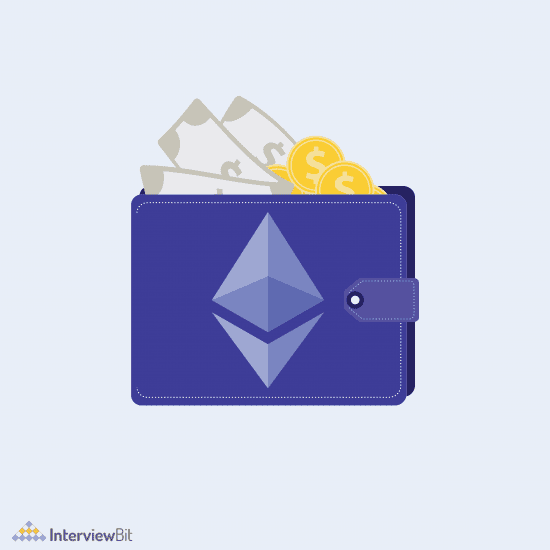Cryptocurrency Security For Teens: How to Keep Your Investments Safe

In the ever-evolving world of finance, cryptocurrencies have taken the stage as one of the most intriguing and dynamic investment options available today. While they offer incredible potential for teens looking to grow their savings and learn about finance, the world of cryptocurrencies is not without its risks. With security being a paramount concern, it’s crucial for teenagers to understand how to safeguard their investments. In this comprehensive guide, we will delve into the world of cryptocurrency security, helping teens navigate the digital frontier and keep their investments safe.
Understanding the Basics
Before diving into the intricacies of cryptocurrency security, it’s essential to grasp the foundational concepts of this digital asset class.
What are Cryptocurrencies?
Cryptocurrencies are digital or virtual currencies designed to function as a medium of exchange. Unlike traditional fiat currencies (e.g., the US dollar or the Euro), cryptocurrencies are entirely digital and decentralized, meaning they are not controlled by a central authority like a government or a central bank. Bitcoin, created by an entity or individual known as Satoshi Nakamoto in 2009, was the first cryptocurrency and remains the most well-known and widely used.

Key Characteristics:
- Digital Nature: Cryptocurrencies exist only in digital form and have no physical representation, such as paper bills or coins.
- Decentralization: They operate on a technology called blockchain, which is a distributed ledger that eliminates the need for a central authority to validate transactions.
- Anonymity: Cryptocurrency transactions are pseudonymous, meaning they don’t require your personal information. Instead, transactions are recorded on the blockchain using unique alphanumeric addresses.
- Security: Cryptocurrencies use cryptographic techniques to secure transactions and control the creation of new units.
The Power of Blockchain
Blockchain technology is the backbone of cryptocurrencies. It is a decentralized and distributed ledger that records all transactions across a network of computers. The blockchain ensures security and transparency in cryptocurrency transactions.

Key Concepts:
- Blocks: Transactions are grouped into blocks. Each block contains a list of transactions, a timestamp, and a reference to the previous block.
- Decentralization: The blockchain is stored on a network of computers (nodes) around the world. No single entity has control over the entire network.
- Consensus Mechanisms: Cryptocurrencies use various consensus mechanisms (e.g., Proof of Work, Proof of Stake) to validate and add new transactions to the blockchain.
- Transparency: All transactions are public and can be viewed on the blockchain, enhancing transparency and trust.
Wallets and Private Keys
To hold and manage cryptocurrencies, users need a digital wallet. This wallet stores the private keys, which act as a digital signature for your cryptocurrency holdings. Understanding how wallets and private keys work is essential for cryptocurrency security.

Wallet Types:
- Software Wallets: These are applications or software programs that you install on your computer or smartphone. They are convenient but may be vulnerable to malware or hacking.
- Hardware Wallets: Physical devices designed specifically for storing cryptocurrencies offline. They are highly secure as they are not connected to the internet, reducing the risk of hacking.
- Paper Wallets: A paper wallet is a physical document containing a public address for receiving cryptocurrencies and a private key for spending them. It’s offline and, therefore, secure from online threats.
Private Keys:
- Your private key is a long alphanumeric code that provides access to your cryptocurrency holdings.
- It’s crucial to keep your private key secret and secure. Anyone with access to your private key can access and control your cryptocurrencies.
Also, read – Top 10 Ways To Store Cryptocurrency In 2023 With Immense Security
Security Threats and Risks
Hacking and Phishing

Hacking:
- Cryptocurrency holders are prime targets for hackers. They may attempt to infiltrate wallets, exchanges, or your personal devices to steal your private keys.
- Common tactics include malware, keyloggers, and exploiting software vulnerabilities.
Phishing:
- Phishing is a deceptive practice where cybercriminals impersonate legitimate entities to trick users into revealing their private keys or login credentials.
- Phishing attempts often come through email or fake websites that closely resemble legitimate ones.
Exchange Vulnerabilities
- Exchanges are platforms where users can buy, sell, and trade cryptocurrencies. However, they are also popular targets for cyberattacks.
- A successful breach can result in the loss of funds for users of the exchange.
Security Measures:
- When using exchanges, it’s crucial to choose reputable ones with a history of robust security measures.
- Enable two-factor authentication (2FA) to add an extra layer of security to your exchange account.
Scams and Frauds

Ponzi Schemes:
- Some cryptocurrency projects promise unrealistically high returns to attract investors. These often turn out to be Ponzi schemes where returns are paid to earlier investors from the capital of new investors.
Fake ICOs:
- Initial Coin Offerings (ICOs) are fundraising methods for new cryptocurrency projects. Scammers sometimes create fake ICOs to collect funds without ever delivering a legitimate product.
Steps to Ensure Cryptocurrency Security
Now that we’ve covered the risks, let’s explore the steps teens can take to enhance their cryptocurrency security.
1. Choose Reputable Exchanges When buying or trading cryptocurrencies, use well-established and reputable exchanges with a track record of security.
2. Use a Hardware Wallet Consider investing in a hardware wallet, a physical device that stores your private keys offline. This offers a higher level of security than online wallets.
3. Enable Two-Factor Authentication (2FA) Always enable 2FA on your exchange accounts and wallets. This adds an extra layer of security by requiring a second verification step.
4. Be Wary of Phishing Attempts Never click on suspicious links in emails or messages. Always double-check the authenticity of the websites you visit.
5. Keep Your Private Keys Secure Protect your private keys like you would protect your most valuable possessions. Never share them with anyone.
6. Stay Informed Stay updated on the latest news and trends in the cryptocurrency space. Awareness of potential threats is a powerful defense.
7. Diversify Your Portfolio Avoid putting all your funds into a single cryptocurrency. Diversifying your investments reduces risk.
8. Do Your Due Diligence Before investing in a cryptocurrency, research the project, team, and its potential for the future. Be skeptical of promises that seem too good to be true.
Lending & Borrowing
Lending/borrowing in defi is a form of lending and borrowing cryptocurrency at high interest rates that is not managed by a third party with full transparency and security of blockchain.
The entire process of borrowing and lending through dApps, smart… pic.twitter.com/0PGl63u3ul
— Richie (@lynaxinh123) October 17, 2023
Conclusion
Understanding the basics of cryptocurrencies and the associated security threats is paramount for anyone, especially teenagers, looking to invest in this digital frontier. With this knowledge, teens can make informed decisions, protect their investments, and avoid falling victim to malicious actors in the cryptocurrency space. Staying vigilant, adopting secure practices, and being cautious are essential to navigate the world of cryptocurrencies safely.
Investing in cryptocurrencies can be an exciting and educational journey for teens. However, it comes with its set of challenges, especially in terms of security. By understanding the risks, taking necessary precautions, and staying informed, teenagers can enjoy the benefits of the cryptocurrency world while keeping their investments safe. Remember that cryptocurrency investments, like any other investments, carry inherent risks, and responsible investing is key to long-term success in this space.





























































